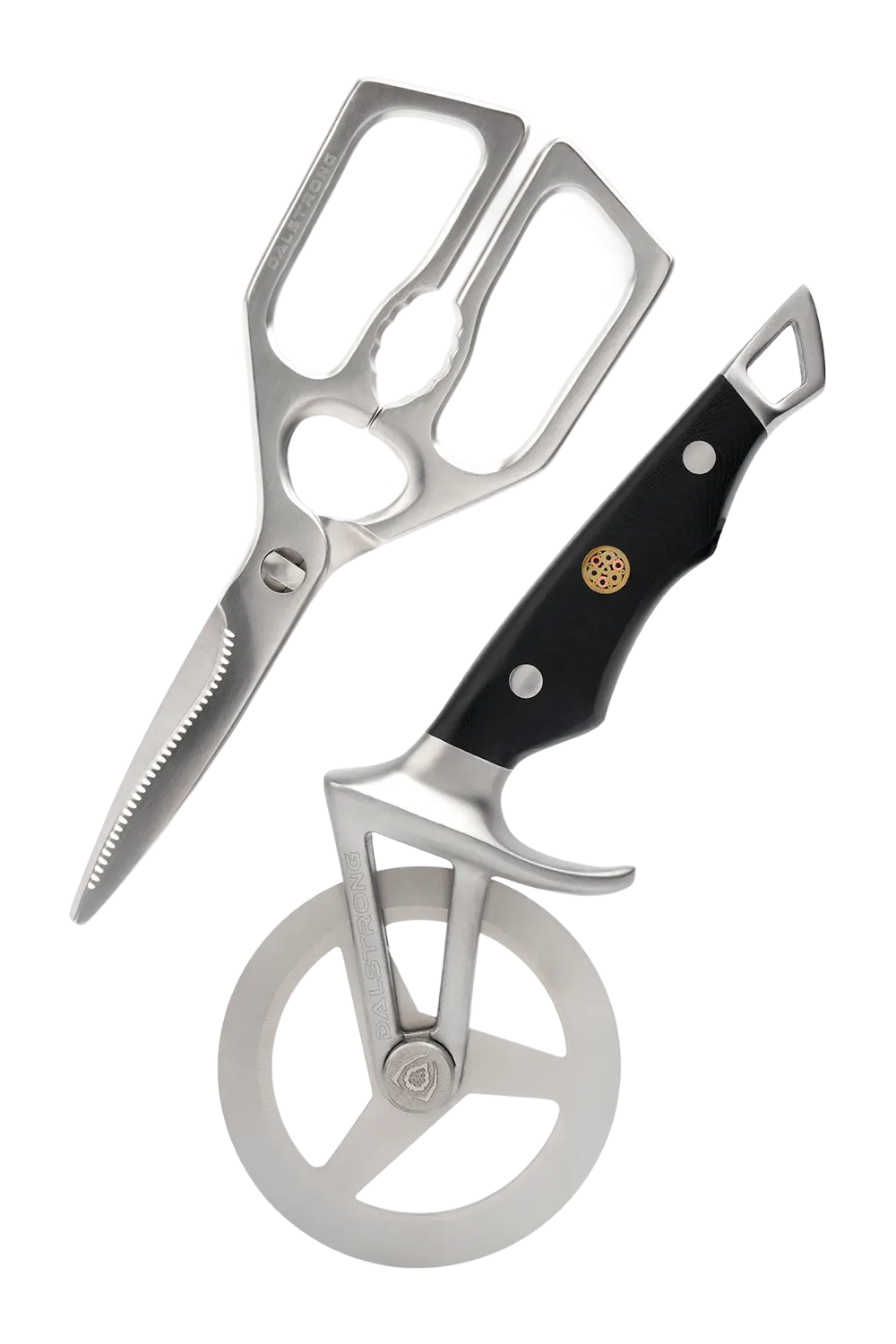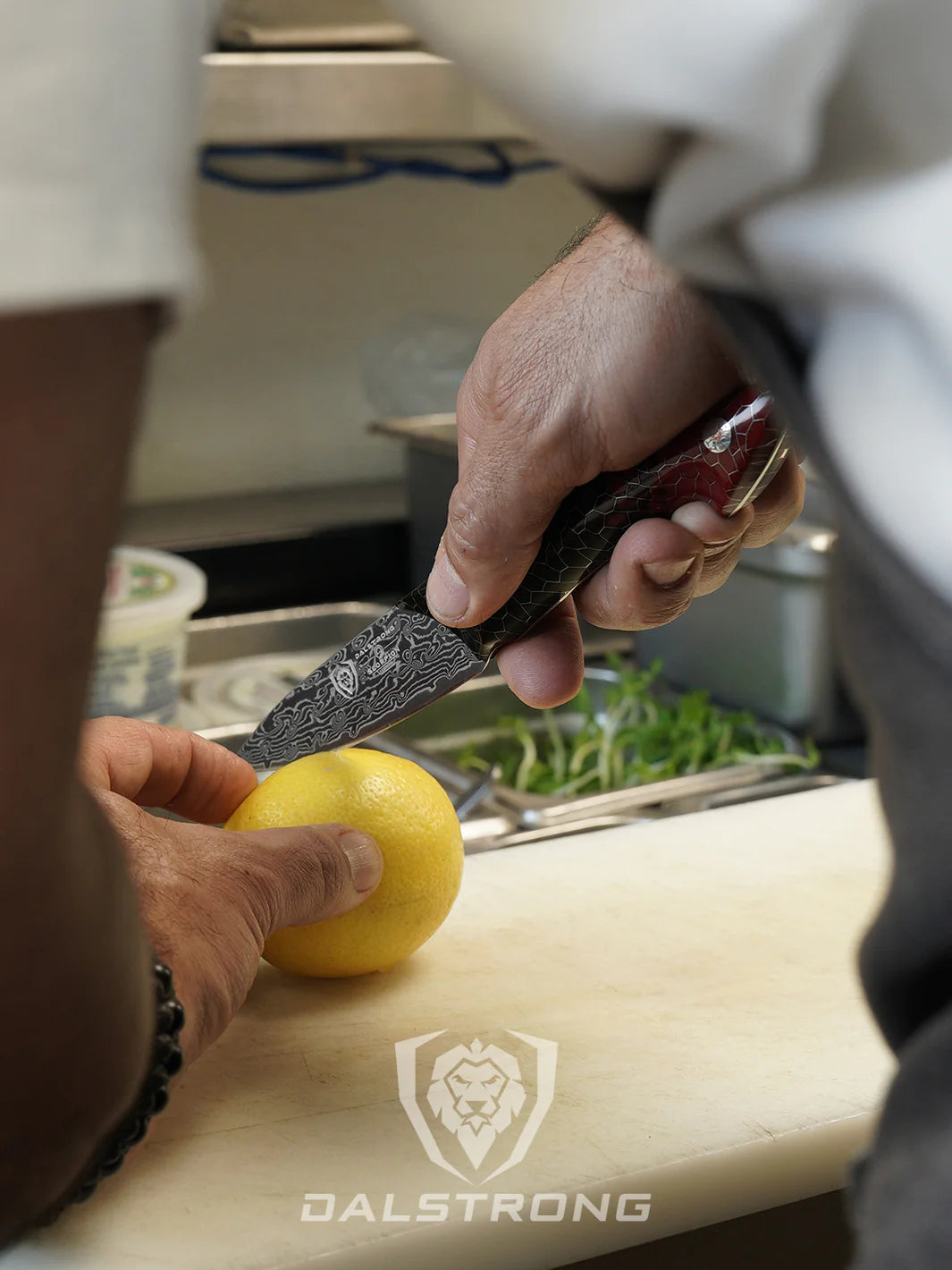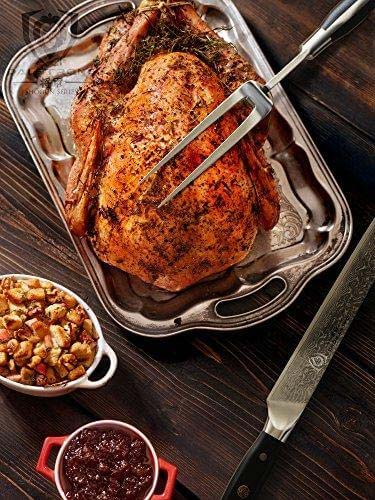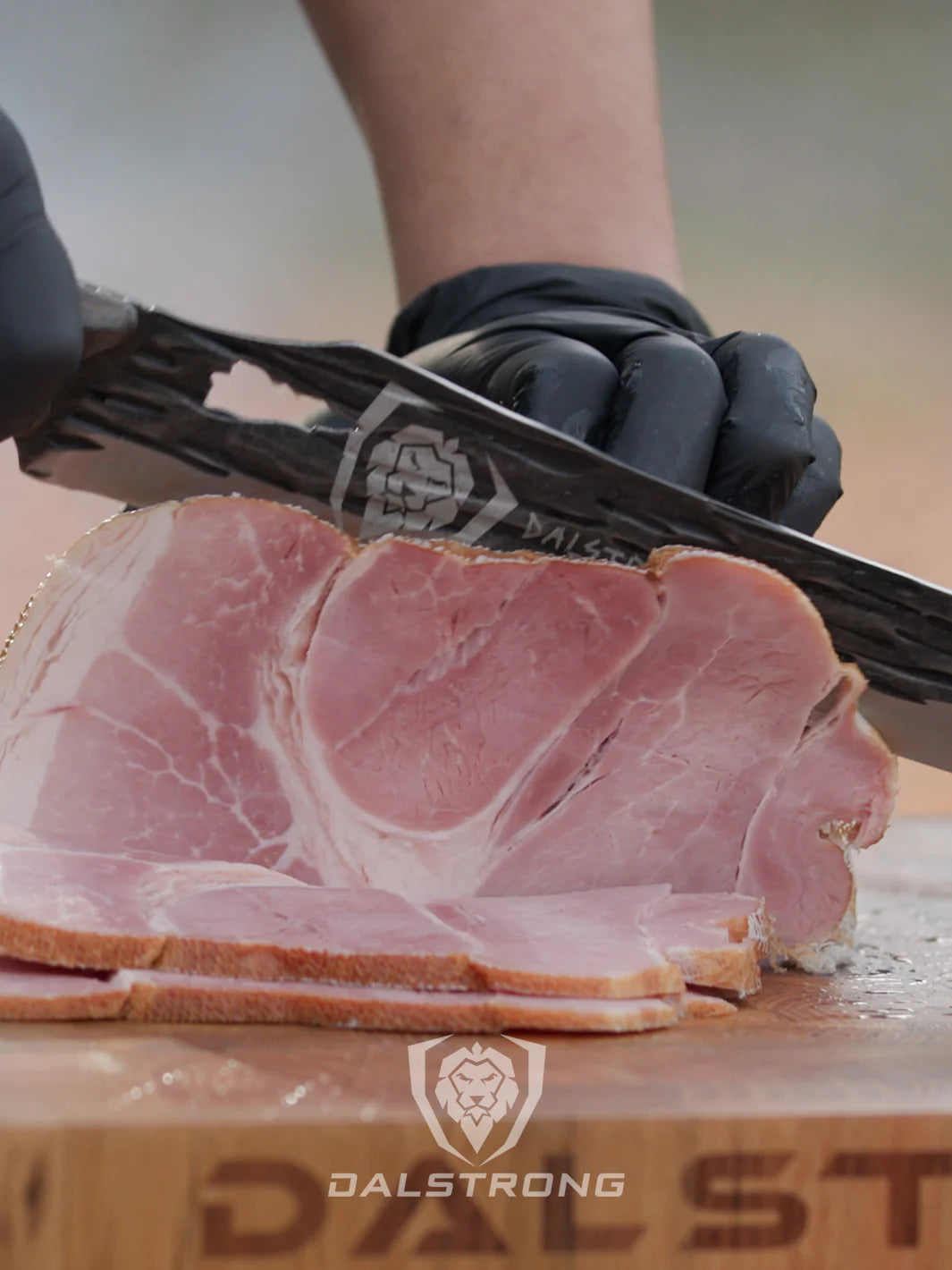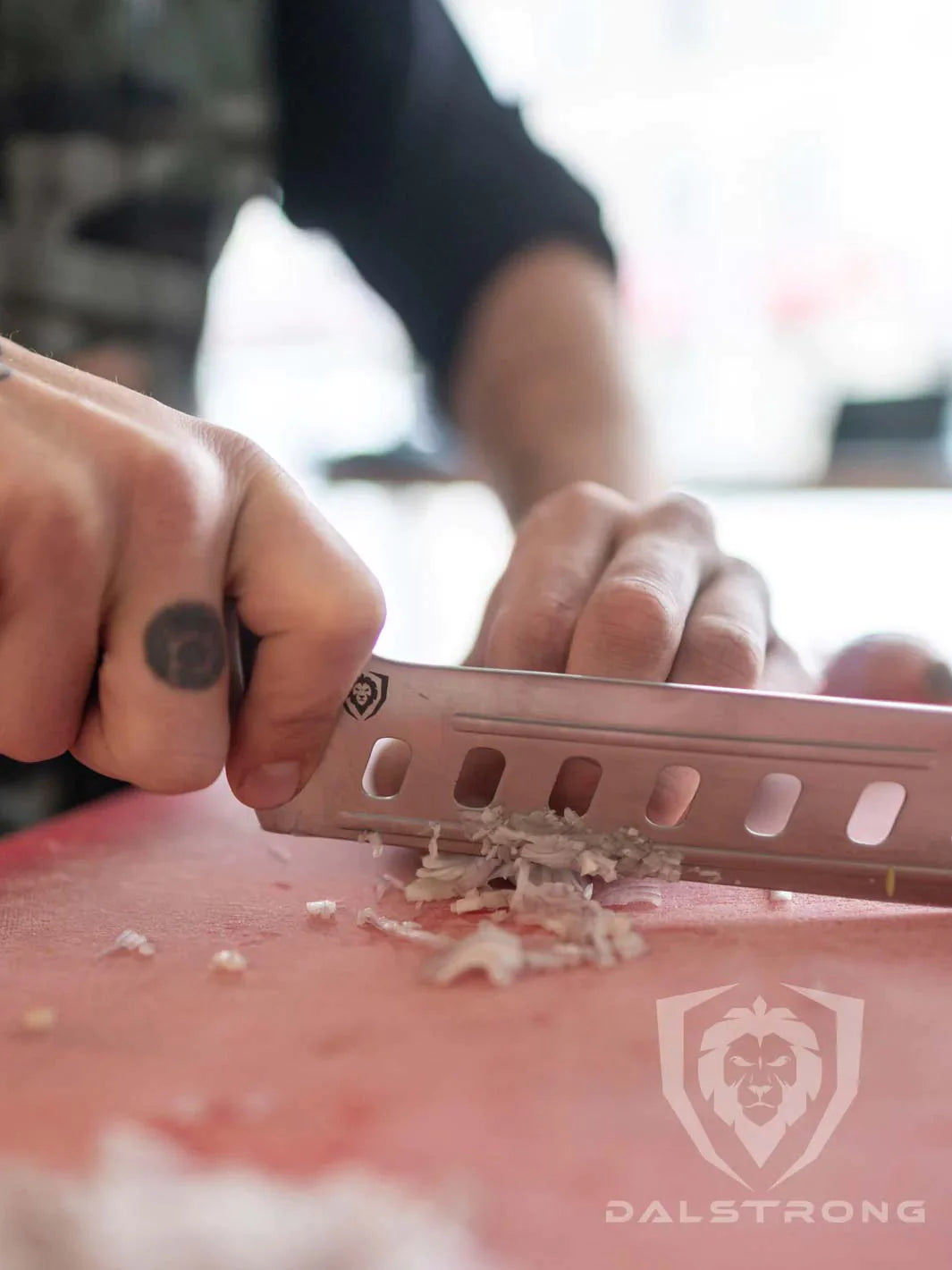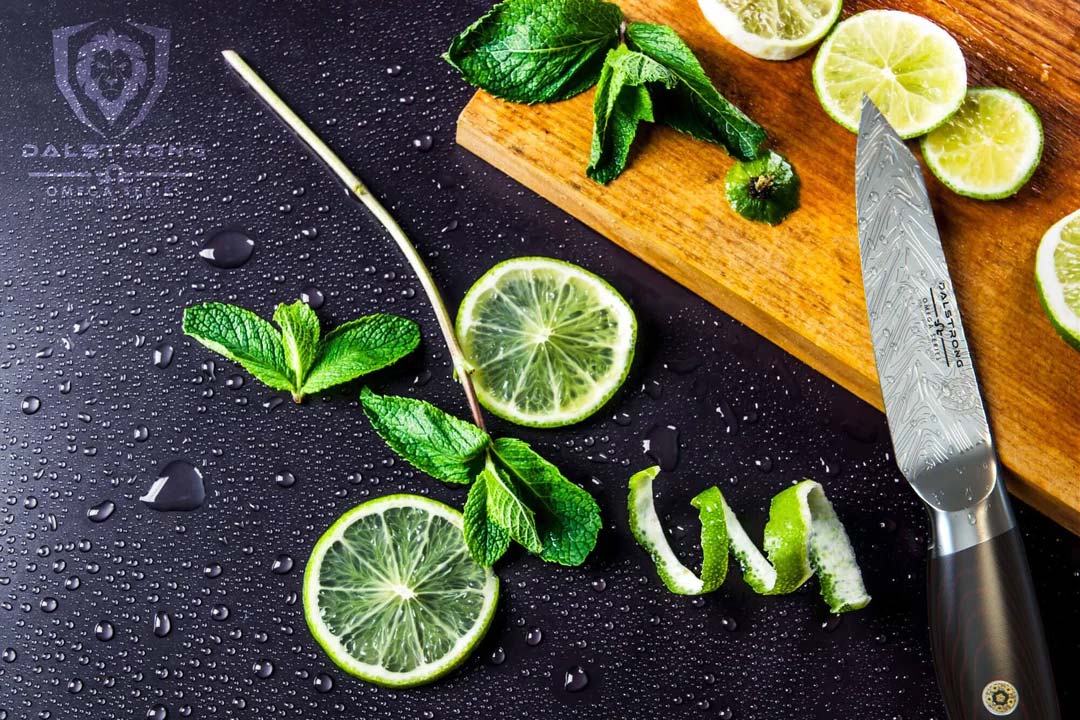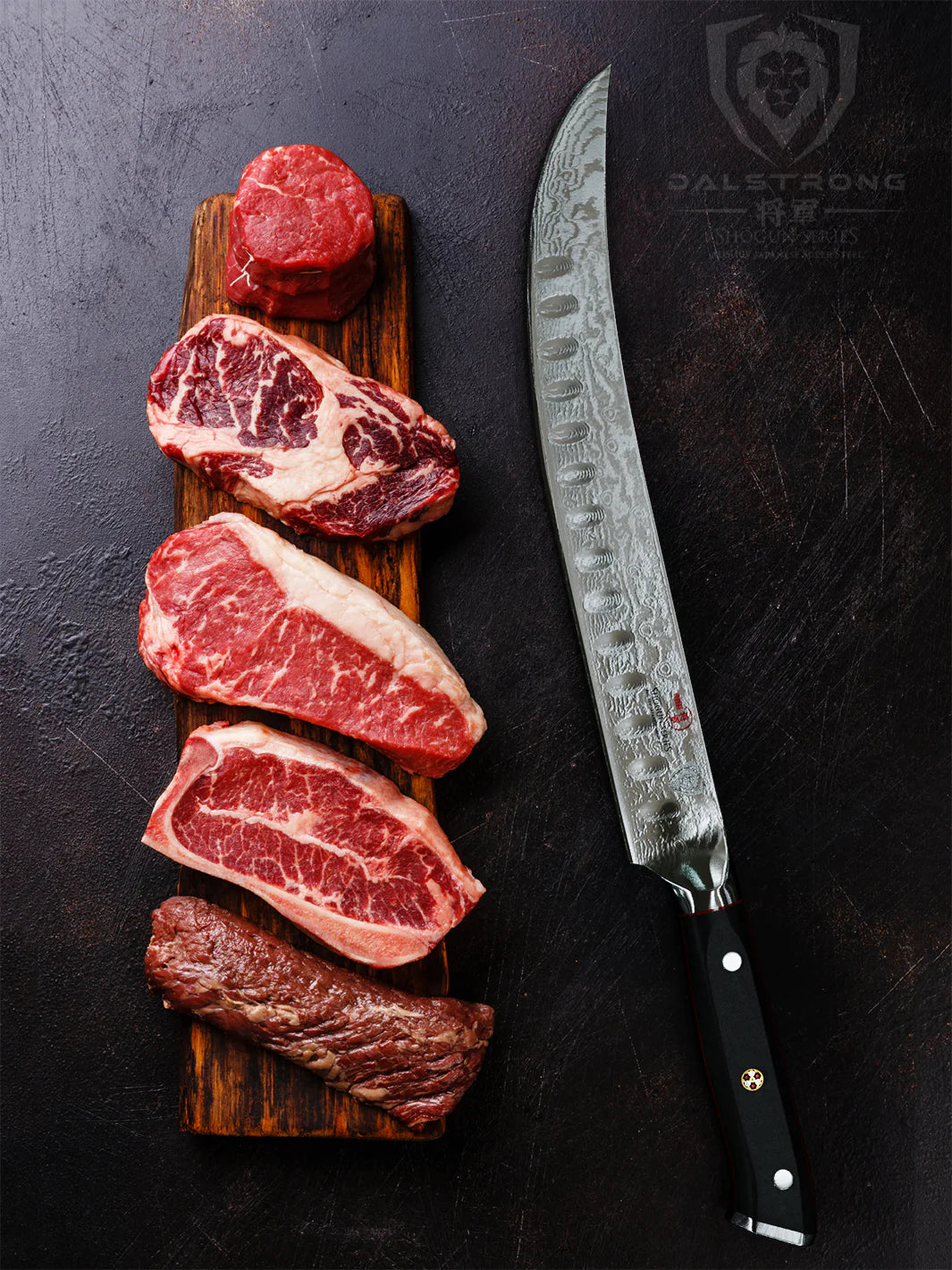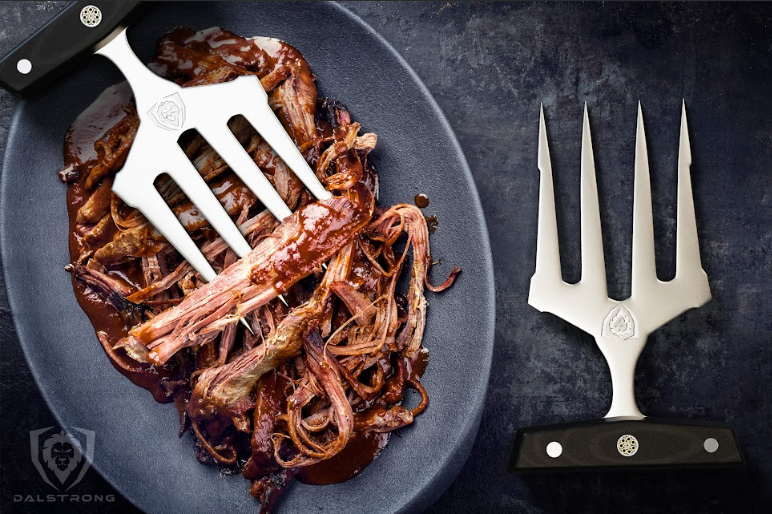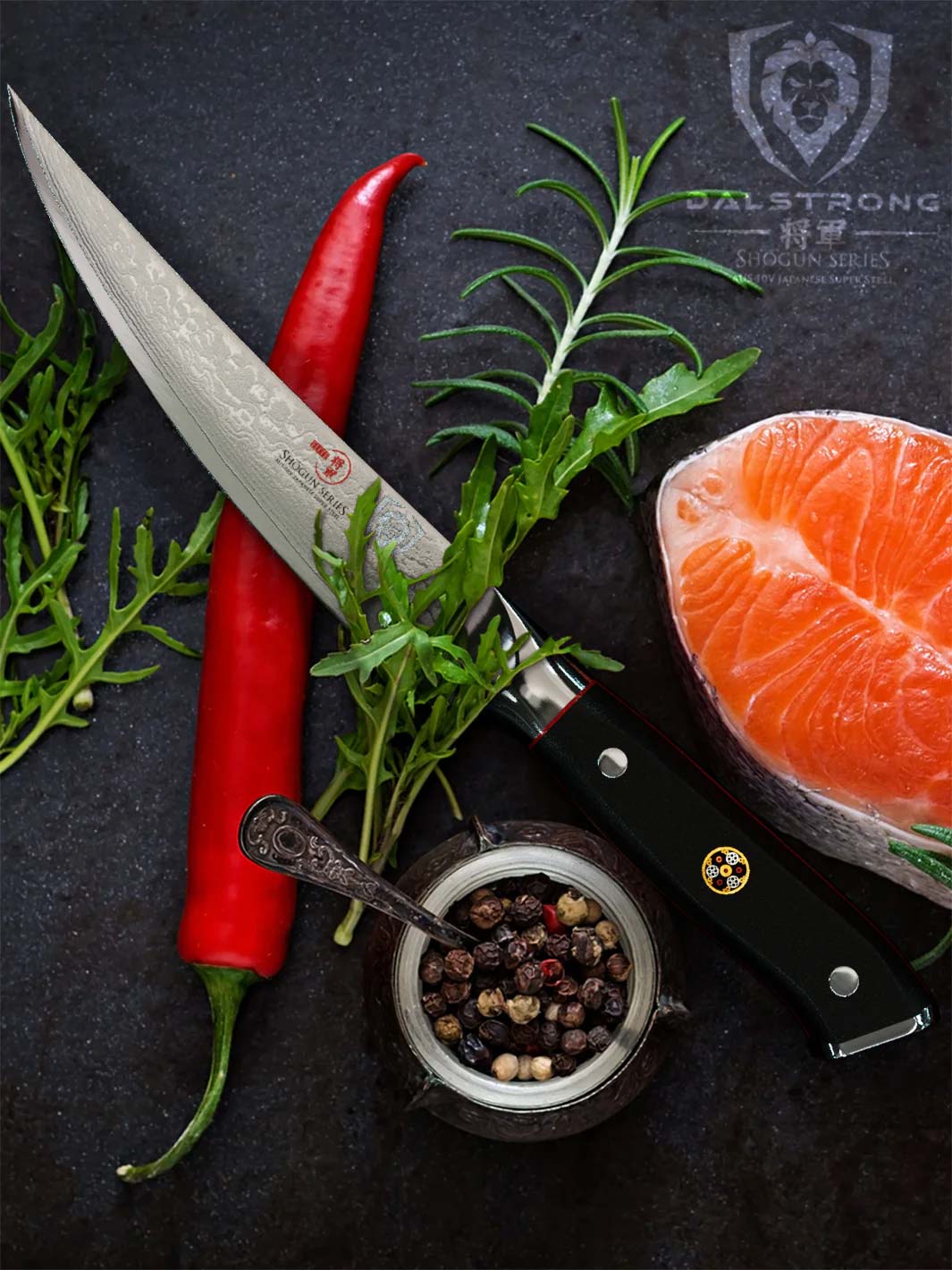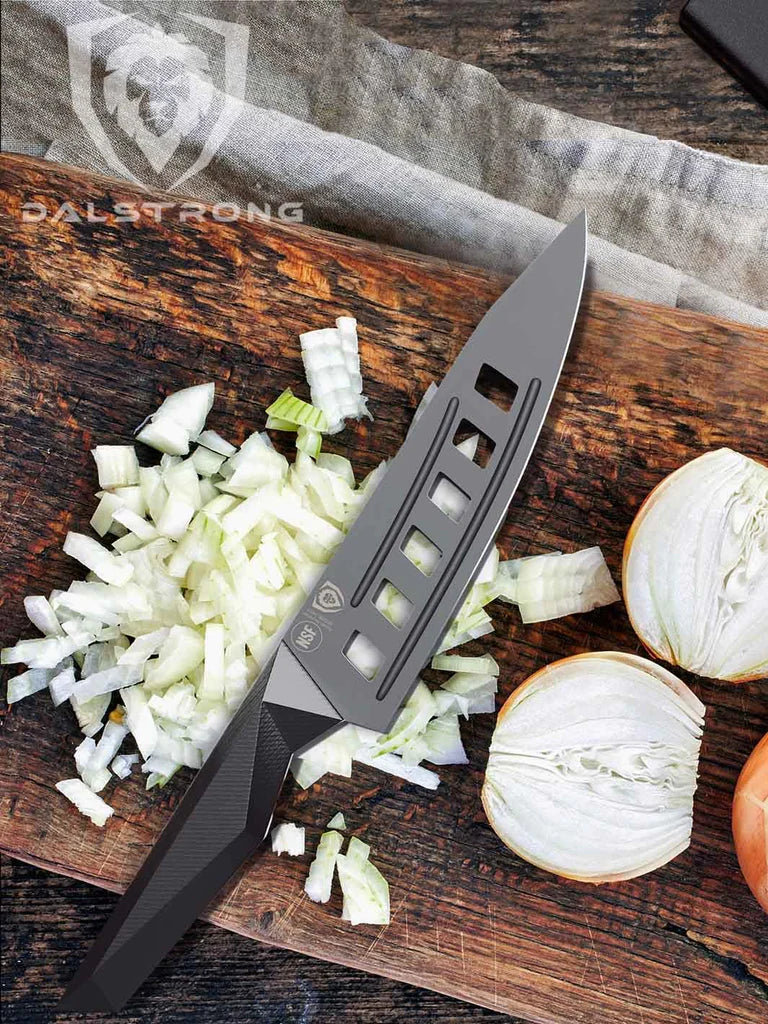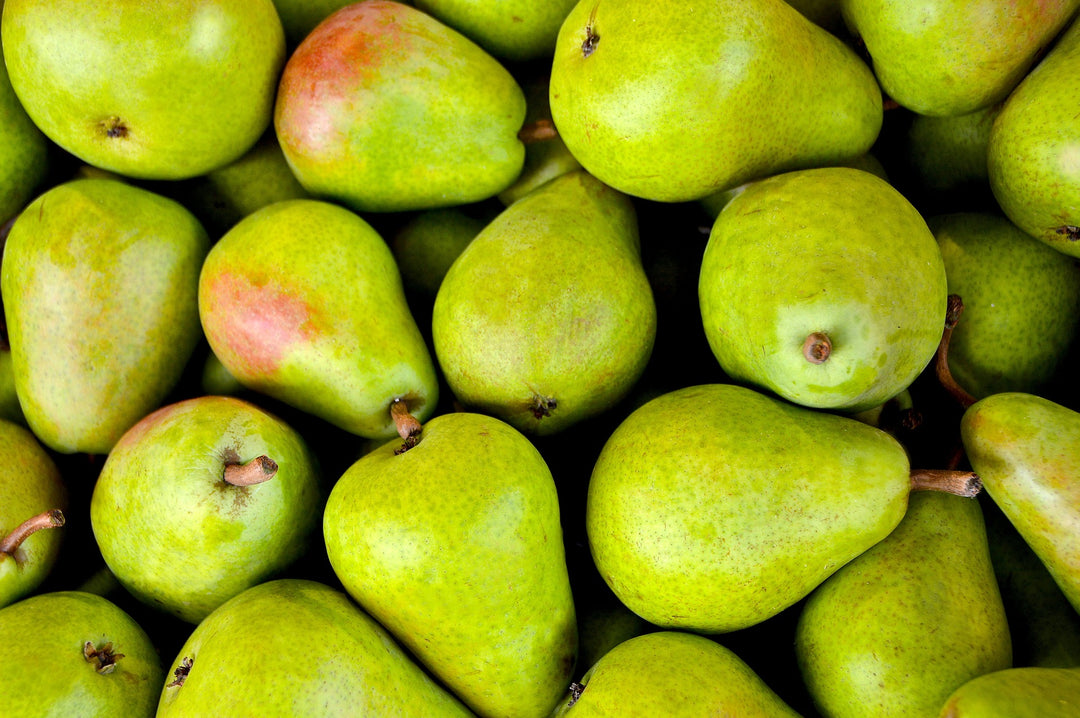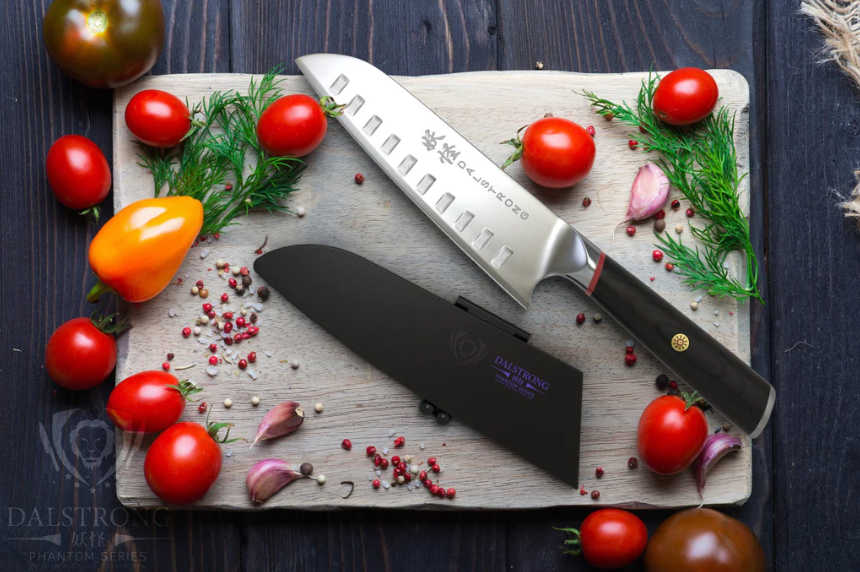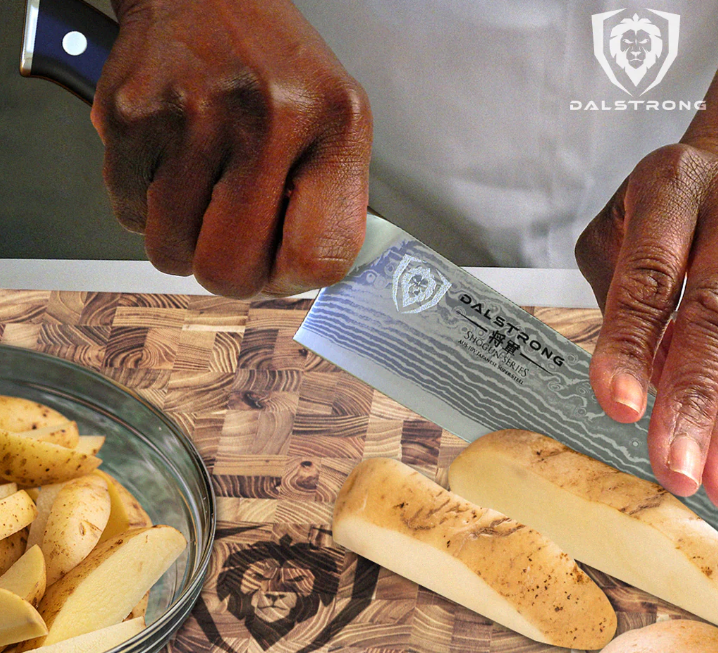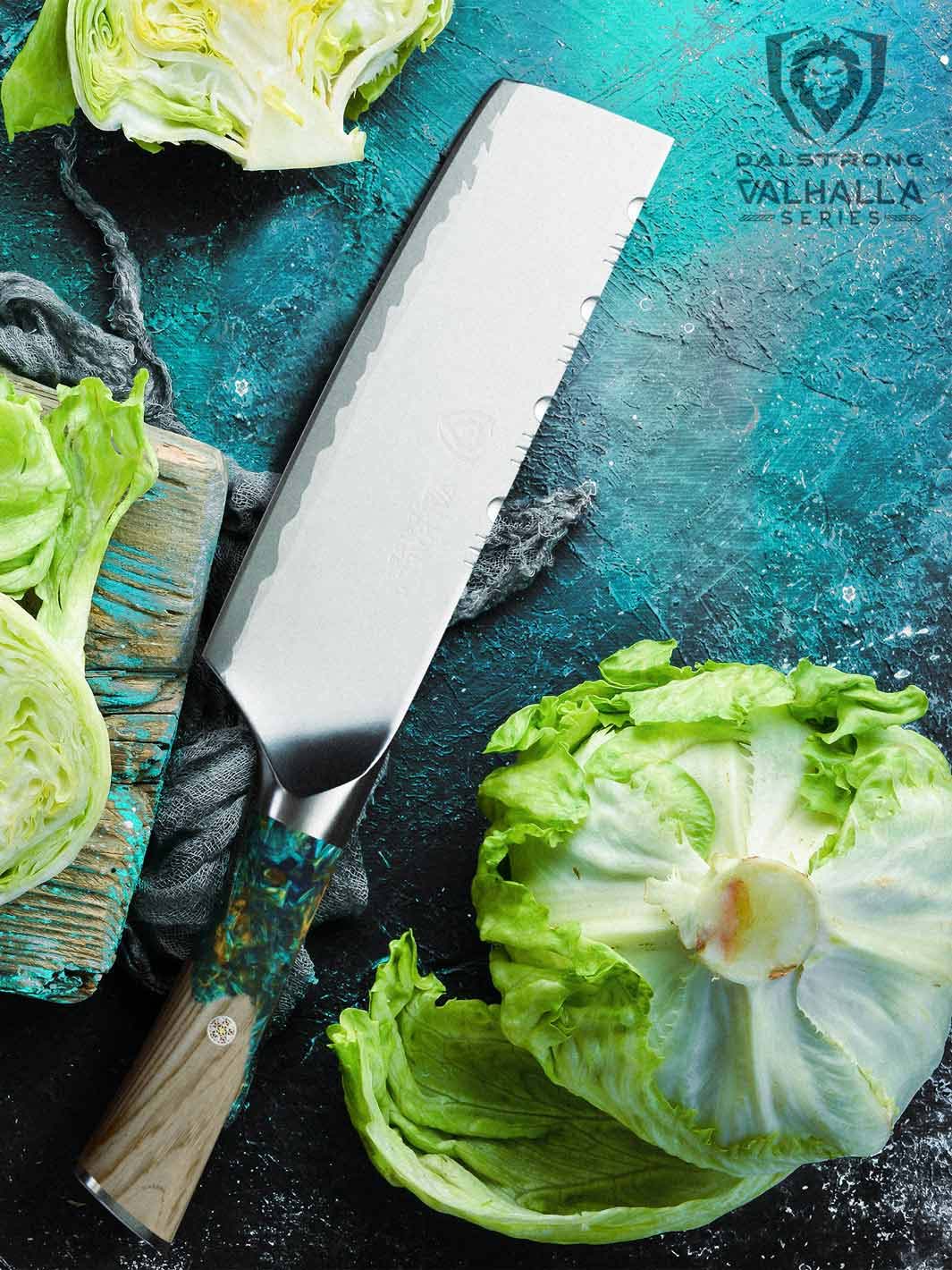Best Method: How To Cut Cilantro
 Nakiri Knife 6.5" | Frost Fire Series
Nakiri Knife 6.5" | Frost Fire Series

Quick Overview: How To Cut Cilantro
- Clean the cilantro properly, then drain and let it dry.
- Align all the stems and leaves at the same level.
- Cut off the lower stems. Leaves and branches stay intact.
- Chop the bunch transversely with a sharp knife, using a rocking motion.
- Repeat until you get the right size.
I love cilantro, but I am well aware that there are two types of people: those who love it and those who hate it - and the polarity is radical. If you’re reading this, then you either 1) love it too 2) need to add cilantro to one of your recipes. In either case, read on to discover the wonderful, exotic world of cilantro.
1. Cilantro: A Little Context

Cilantro is an aromatic herb with small, deep green leaves and tender stems, very similar to those of parsley, dill and fennel. It is known by several other names such as coriander, culanter, culantric. People also call it Chinese or Japanese parsley.
The flavor is intense and usually every part of the plant can be used for cooking. The seeds are used as a spice, the leaves can aromatize and even decorate dishes, the stems provide a strong flavor and are used in curries and soups. The flowers have a pleasant lemony flavor and can be used whole or ground.
The exact origin of coriander is unknown. It is said to be somewhere in the Eastern Mediterranean, Southwestern Europe, North Africa and the Middle East. What is certain is that cilantro is one of the oldest species: the herb and its seeds are mentioned in Sanskrit writings, in the Old Testament and in Egyptian records more than 3,500 years ago.
Cilantro is an important part of Asian and Oriental cuisine, especially Thai and Indian cuisine (like for curries and masalas); as well as Mediterranean, Caribbean and Latin American cuisine, especially in Mexico.
Mexican recipes, so popular all over the world, mostly include cilantro. From the traditional guacamole, pico de gallo and tacos to the very complex mole recipes: Your Mexican dinner night will need to include cilantro.
This aromatic herb is great for flavoring black beans and bean soup. Spice up a delicious cilantro lime chicken, make cilantro lime rice and even cilantro lime cauliflower rice for a change. You can also make easy chicken tacos for a lazy day with a creamy cilantro lime dressing. Explore the many possibilities!
2. Harvesting Cilantro
Dalstrong Gladiator Series 7.5" Serbian Chef Knife
Coriandrum Sativum (that's its scientific name) grows naturally all over the world. With proper care, harvesting cilantro without killing the plant can be easy, even if you’re not an expert. Besides, cilantro can be harvested frequently, whether you want small quantities or larger batches.
The growing season for cilantro is early spring to late spring or fall. It sprouts faster in the summer months as it prefers the sun (but tolerates partial shade). It should not be overwatered but the soil shouldn't be too dry either.
Be sure not to harvest more than 1/3 of the plant, removing the leaves and larger cilantro stems while keeping the plant intact, so that it will continue to grow.
Learn the surprising health benefits of cilantro here.
3. Best Way To Clean Cilantro
 8.5'' Chef's Knife | Quantum 1 Series | Dalstrong ©
8.5'' Chef's Knife | Quantum 1 Series | Dalstrong ©
Cilantro may appear clean to the naked eye, but it is always a good idea to ensure that there is no dirt, bacteria or chemical residue in its foliage.
The best way to clean cilantro is to rinse the bunch or branches under cold running water in a colander. Shake it well to wash all the leaves thoroughly.
It also works to submerge it in a bowl of cold water and shake the branches and leaves gently to remove the dirt. In this case you can even add two tablespoons of vinegar for each cup of water, to combat possible bacteria.
Finally, place the bunch of cilantro on paper towels to dry it.
4. How To Cut Cilantro Step By Step

Cutting a bunch of cilantro only takes a few minutes and is easier than you think, as long as you pay attention to details and use the right tools.
Please note, a chef's knife is the best option for chopping cilantro because the upward-curved edge allows you to balance the knife and get fine, precise cuts.
Cilantro preparation: Before chopping, clean your cilantro following our previous recommendations. Then, remember to drain the branches in a colander and place them on a large paper towel to get rid of excess water. Remove any discolored or wilted bits, so that only the tender stems and healthy leaves remain.
This is how you cut cilantro:
- Place it on the cutting board and align all the stems and leaves towards the same direction, trying to keep the lower stems aligned at the same level.
- Cut off the lower stems. Cilantro stems have a stronger flavor than leaves. You can still use some bits according to the recipe.
- If the bunch is too big, cut it in half. You can also save one portion for later.
- Start chopping the bunch transversely with a sharp knife. Swing the knife with a rocking motion from one end to the other.
- Repeat the cutting technique until the pieces are of your desired size.
5. Tools You’ll Need
Chopping cilantro is even easier if you use the right knife. Here are our recommendations:
1. Chef's Knife 6" - Shogun Series ELITE
This short-length knife is agile and lightweight, extremely maneuverable. Cutting herbs like cilantro and easily transitioning from one cutting task to another is possible with this elegant Shogun Series blade made of premium Japanese steel.
PROS:
- Super steel core with high levels of carbon for maximum strength.
- Scalpel-like edge, sharpened with the Dalstrong Diamond Detailing (D3) technique.
- The Tsuchime hammered finish on the blade creates air capsules that prevent food from sticking.
- Triple riveted handle, incredibly strong and durable.
- Ergonomic handle design.
- Exclusive Tsunami Rose visual pattern on the blade.
CONS:
- The size is practical for cutting cilantro, but still under the universal standard chef's knife of 8”.
- I like the patterns on the blade, but they’re far from traditional. Conservative cooks will go for a traditional, smooth blade.
2. Chef's Knife 7" | Gladiator Series | NSF Certified
A versatility bomb, not only because it’s a chef’s knife, but because it’s from the Gladiator series, meant to cover everyday battles with its array of workhorses. This medium-length blade also offers more control with its slightly narrower, lighter blade.
PROS:
- Forged from German high-carbon steel.
- Full tang (the blade extends through the handle).
- Comfortable and maneuverable design.
- Reinforced bolster for better balance and less effort.
- Certified by the National Sanitation Foundation (NSF).
- High quality at an affordable price.
CONS:
- Besides performance, some people also value more eye-catching designs for their knives (like the Chef's Knife 8" | Valhalla Series)
- The size is ideal for certain tasks, but some may be looking for the standard 8” or even bigger blades.
3. Chef's Knife 8" | Dark Ice Edition | Frost Fire Series
This professional chef's knife combines the efficiency of a razor-sharp 8" blade with the striking, sleek design of the Frost Fire Series. Really one of a kind in every sense. Too much for chopping cilantro? Don’t worry. You can use it for everything else too.
PROS:
- The seven-layer high-carbon with added cobalt really increases wear resistance.
- Unique design: the frosted-look blade goes well with the "black Ice" resin handle, featuring a special honeycomb pattern.
- Precision sandblasted finish that gives the blade excellent non-stick properties.
- Ergonomically shaped handle for a stress-free grip on every movement.
- The knife comes with a leather sheath.
CONS:
- This model is the “evil twin”, if you will, of a more purist, all white version that may suit some personalities better: the Chef's Knife 8" Frost Fire Series | NSF Certified.
- Many may prefer the three virtues of a Japanese multitasking knife such as the Santoku Knife 7" | Frost Fire Series | NSF Certified.
4. Chef's Knife 9.5" | Valhalla Series
This one is for the adventurous cook, trying out exotic Mexican or South Asian recipes with cilantro. The long Valhalla chef's knife features beautiful craftsmanship as well as quality and performance for a sword-like experience.
PROS:
- Powerful blade forged from a single piece of 5-ply stainless steel with high carbon content.
- Hand sharpened to 8-12 degrees per side.
- Sturdy resin handle, finished with stabilized wood and a stainless steel bolster.
- The sandblasted finish blade is resistant to stains and scratches.
- The unique design and presentation are complete with a premium Valhalla leather sheath.
CONS:
- Because this is probably the most special knife you’ll own, the price is also a bit special.
- It will be difficult to combine with other series, sets or kitchen décor (unless all your things share the same vibe).
5. Chef Knife 10" - Centurion Series
This is a premium knife from Dalstrong’s novelty: the Centurion Series. The 10" long blade is great for larger pieces of meat, poultry and fish; but also all types of vegetables including fine herbs such as cilantro.
PROS:
- Swedish high-carbon steel that ensures excellent sharpness and impressive cutting prowess.
- Large, wide blade allows food to be easily transferred from the cutting board to plate or skillet.
- Tactile handle for a comfortable and secure grip.
- The super sharp blade is ideal for precision cutting.
CONS:
- The size may be too much for chopping herbs, although it’s perfectly possible.
- While a chef’s knife is my go-to knife for chopping cilantro; a lot of people are used to using a paring knife for this type of task.
6. How To Store Cut Cilantro

To keep cut cilantro fresh for longer, wrap it in a paper towel (with the leaves as loose as possible) and put it inside an airtight container. Close the container tightly and store in the refrigerator for up to 2 weeks.
Tip: If, at the time of using the cilantro stored in the refrigerator, it looks a little wilted and soft, try refreshing it in a bowl of ice water. After 2 minutes, drain the cilantro and let it dry. You’ll see it’s fresh and crunchy again.
7. Frequently Asked Questions About Cilantro
What type of knife is the best for fresh cilantro?
The most important quality is sharpness. A sharp knife is absolutely necessary for chopping cilantro. A dull knife is inefficient and dangerous. That being said, a chef’s knife, a Santoku knife or a paring knife are all good choices.
What Mexican recipes can I cook with cilantro?
The classics include pico de gallo, chicken tacos and bean soup. We also love the combination of cilantro and lime, for example cilantro lime cauliflower rice or cilantro lime dressing for salads.
Can I put cilantro in the freezer?
Storing cilantro in the freezer is not recommended because cilantro has many natural enzymes that decompose quickly when frozen. Fresh cilantro, finely chopped, is always better!
Should you remove cilantro stems?
It's generally recommended to remove thick cilantro stems before using in dishes. To chop cilantro, hold a bunch of leaves and use kitchen scissors to snip off the stems, leaving the tender leaves. The stems can be bitter and have a stronger flavor. Use only the leaves to achieve the desired taste and texture in your dishes.
Is it okay to chop cilantro with stems?
Yes, it's okay to chop cilantro with stems if the recipe calls for it or if you prefer a stronger flavor. While some cilantro recipes recommend using only the leaves for a milder taste, the stems are also edible and contain flavor. For instance, in dishes cooked in an Instant Pot or slow cooker, chopping cilantro with stems can infuse a rich taste into the food along with other herbs and spices.
Do you chop the whole cilantro plant?
You can chop the whole cilantro plant, including both the leaves and the thin stems, depending on your preference and the recipe. While the leaves offer a milder flavor, the stems contain taste as well. In some dishes, like salsas or stews, chopping the whole cilantro plant can provide a more robust taste. Adjust your chopping method based on the dish's desired flavor profile.
How do you cut cilantro with scissors?
To cut cilantro with scissors, remove any thick stems from the bunch. Hold the bunch in one hand and use kitchen scissors to snip the cilantro leaves into the desired size directly over your dish. This method makes chopping cilantro quick and efficient. You can also include some tender stems if you prefer a stronger flavor.






















































































































